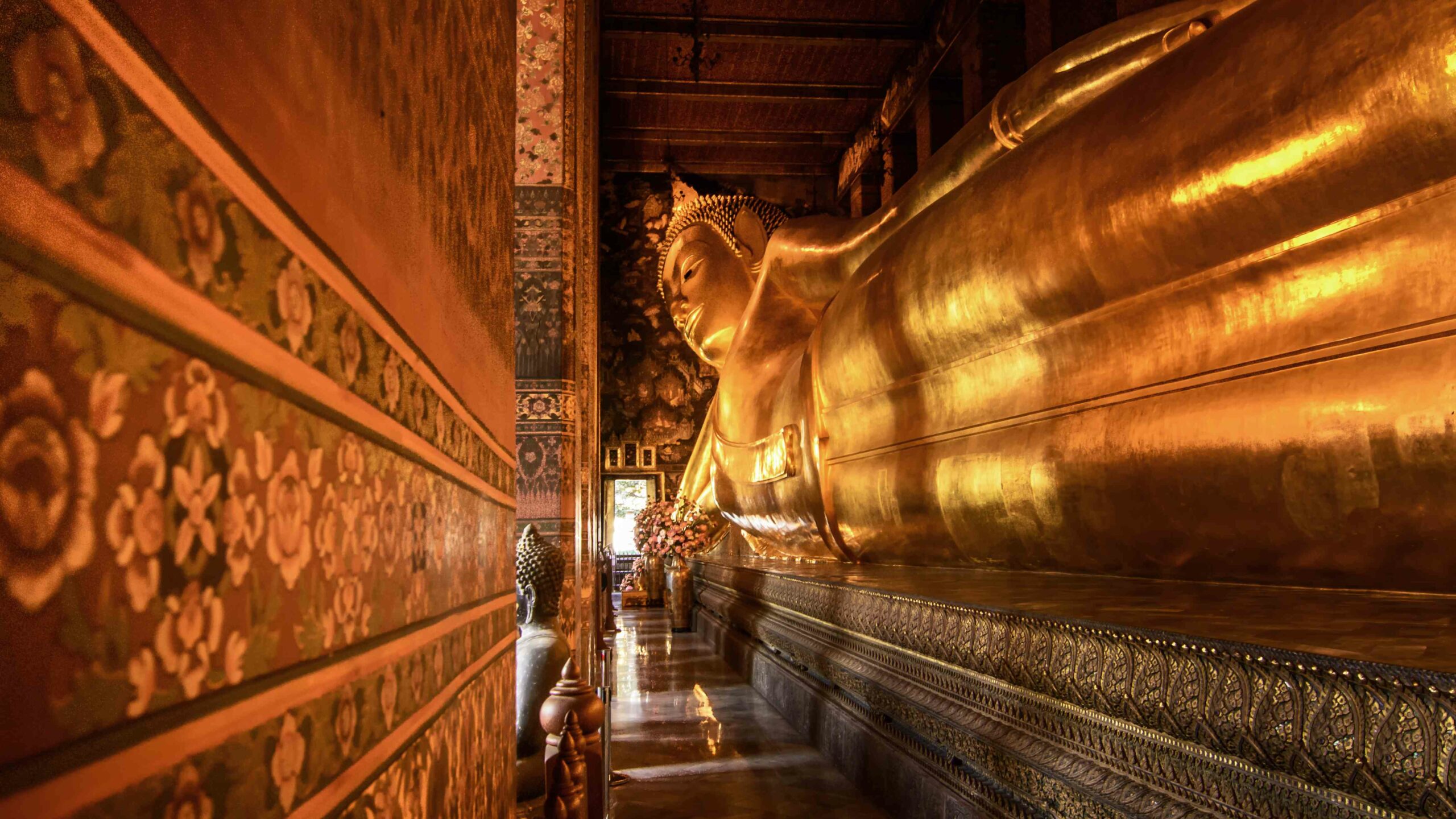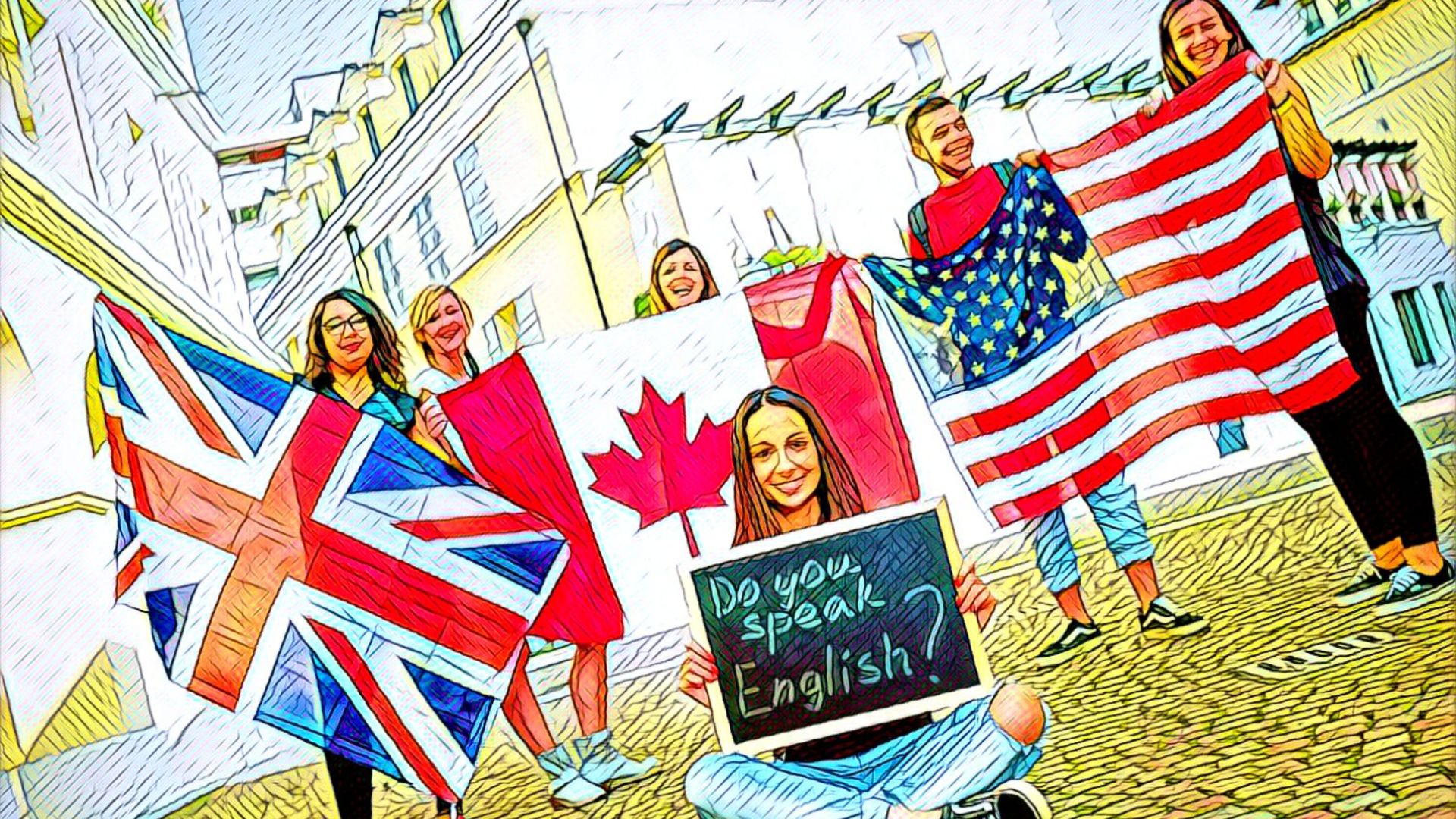In the bustling metropolis of Bangkok, Thailand, where modern skyscrapers and ancient temples coexist in a harmonious blend, Wat Pho stands as a beacon of cultural and spiritual significance.
As one of the oldest and largest temple complexes in Bangkok, Wat Pho is not just a tourist attraction; it’s a living testament to Thailand’s rich history and a vibrant center for traditional Thai medicine and education.
Wat Pho, officially known as Wat Phra Chetuphon Wimon Mangkhalaram Rajwaramahawihana, is a cornerstone of Bangkok’s cultural landscape.
Located in close proximity to the Grand Palace, another iconic landmark, Wat Pho serves as a compelling counterpoint to the modernity that characterizes much of Bangkok. While the city is often celebrated for its bustling markets, vibrant nightlife, and cutting-edge architecture, Wat Pho offers a serene and enlightening experience that transports visitors to a different time and space, deeply rooted in Thai traditions.
The temple complex is perhaps most famous for its colossal Reclining Buddha, a marvel of religious art that measures 46 meters in length and 15 meters in height.
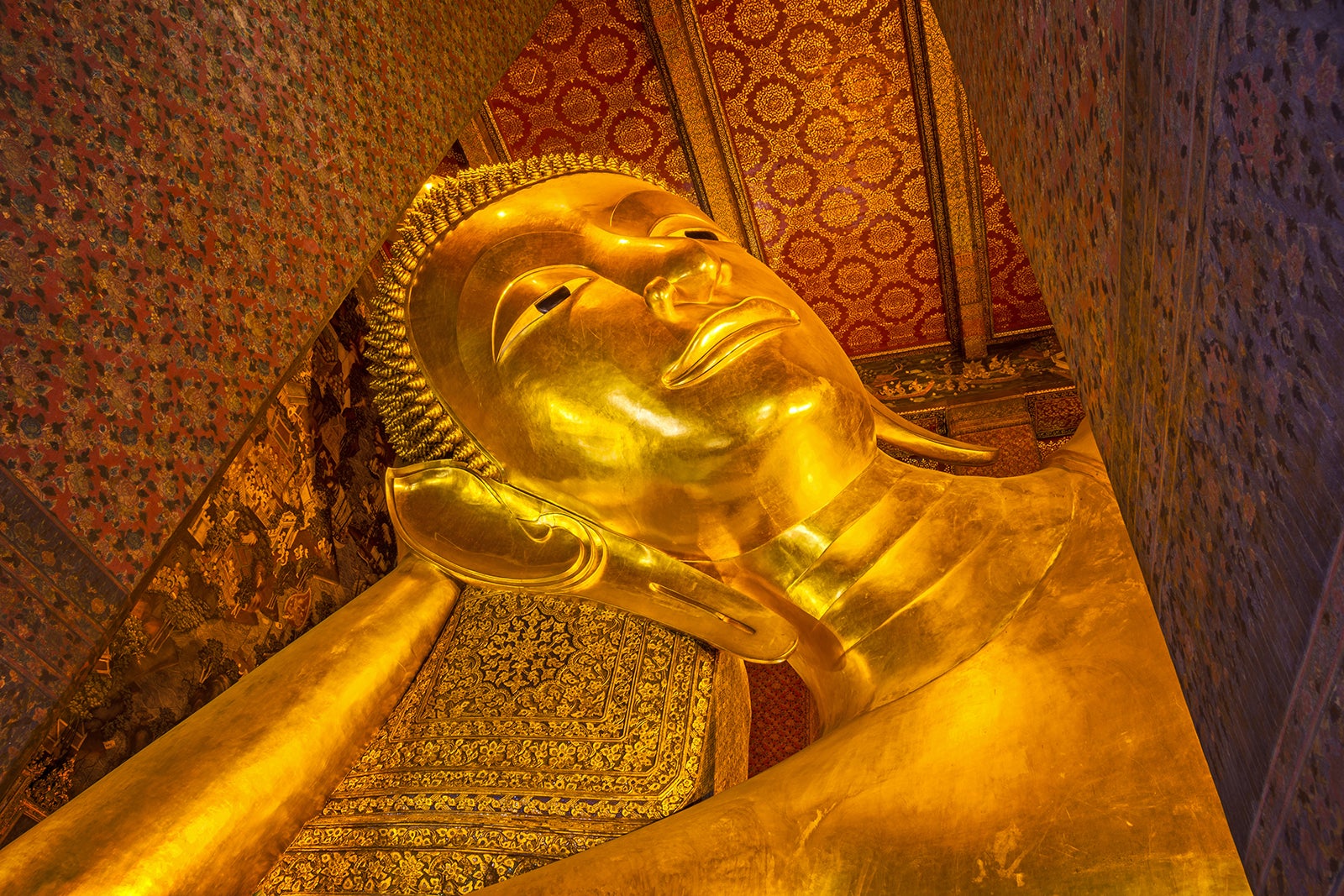
However, the significance of Wat Pho extends far beyond this awe-inspiring statue. It is home to the largest collection of Buddha images in Thailand, each telling a unique story and offering a glimpse into the spiritual ethos that is integral to Thai culture.
Moreover, Wat Pho is recognized as Thailand’s earliest center for public education. It has been a hub for the study of traditional Thai medicine and is considered the birthplace of Thai massage, a practice that has gained international acclaim. The temple’s walls are adorned with inscriptions and illustrations that serve as textbooks, teaching traditional Thai medicine, history, and various branches of science. This educational aspect adds another layer to Wat Pho’s significance, making it not just a place of worship but also a repository of knowledge.
In a city like Bangkok, where the old and the new are in constant dialogue, Wat Pho serves as a spiritual and cultural anchor. It is a place where locals and tourists alike can step back from the frenetic pace of city life and immerse themselves in contemplation, learning, and holistic healing. Whether you’re drawn to its artistic grandeur, its role in the preservation of traditional Thai techniques, or its tranquil ambiance, Wat Pho offers a multifaceted experience that is quintessentially Thai.
In summary, Wat Pho is not merely a tourist destination but a symbol of what makes Bangkok, and Thailand as a whole, unique. It encapsulates the spiritual, educational, and artistic dimensions of Thai culture, making it an essential visit for anyone looking to fully understand the depth and diversity of Bangkok’s cultural landscape.
What Makes Wat Pho Unique.
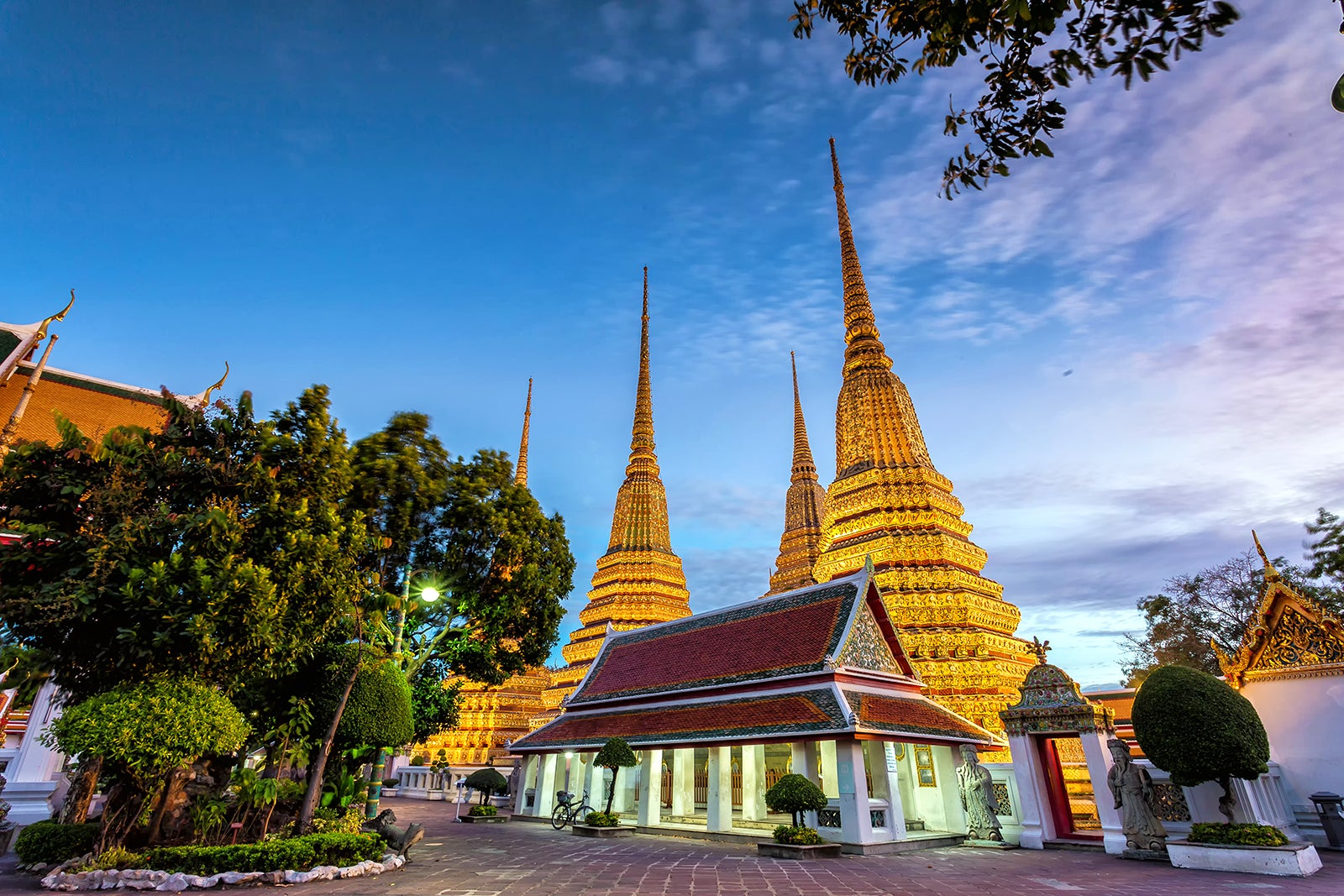
There are at least 5 keys that make Wat Pho unique.
1. A Spiritual Oasis in a Bustling City:
In the midst of Bangkok’s modern skyscrapers and frenetic pace, Wat Pho stands as a sanctuary of tranquility and spiritual nourishment. Located in the heart of Thailand’s capital, this temple complex offers a unique blend of cultural richness and spiritual depth that sets it apart from other landmarks in the city.
2. The Marvel of the Reclining Buddha:
One of the most iconic features of Wat Pho is its colossal Reclining Buddha. Measuring 46 meters in length and 15 meters in height, this statue is the largest of its kind in Bangkok. Covered in gold leaf and intricately designed, the Reclining Buddha is not just an artistic wonder but also a profound spiritual symbol, representing the Buddha’s passage into Nirvana.
3. A Repository of Thai Culture and Art:
Beyond the Reclining Buddha, Wat Pho is home to the largest collection of Buddha images in Thailand. These aren’t mere decorations; they serve as educational tools and spiritual icons, each with its own unique story and significance. The artistry and variety of these images offer a comprehensive look into Thai culture, making Wat Pho a living museum.
4. The Birthplace of Thai Massage:
What further distinguishes Wat Pho is its role as the birthplace of Thai massage. Recognized as Thailand’s earliest center for public education, the temple has been a hub for the study of traditional Thai medicine. Visitors can not only learn about this ancient practice through inscriptions and illustrations on the temple walls but also experience it firsthand at the temple’s renowned massage school.
5. A Multifaceted Experience:
Wat Pho offers a multifaceted experience that goes beyond mere sightseeing. Whether you’re interested in history, spirituality, art, or traditional medicine, Wat Pho has something unique to offer. It’s a place where you can step back from the hustle and bustle of Bangkok life and immerse yourself in a world of contemplation, learning, and holistic well-being.
Wat Pho is not just another tourist destination. It’s a unique blend of Thai heritage, spirituality, and traditional knowledge, making it an essential visit for anyone looking to fully understand the depth and diversity of Bangkok’s, and by extension, Thailand’s cultural landscape.
The Roots of Wat Pho: A Journey Back in Time.
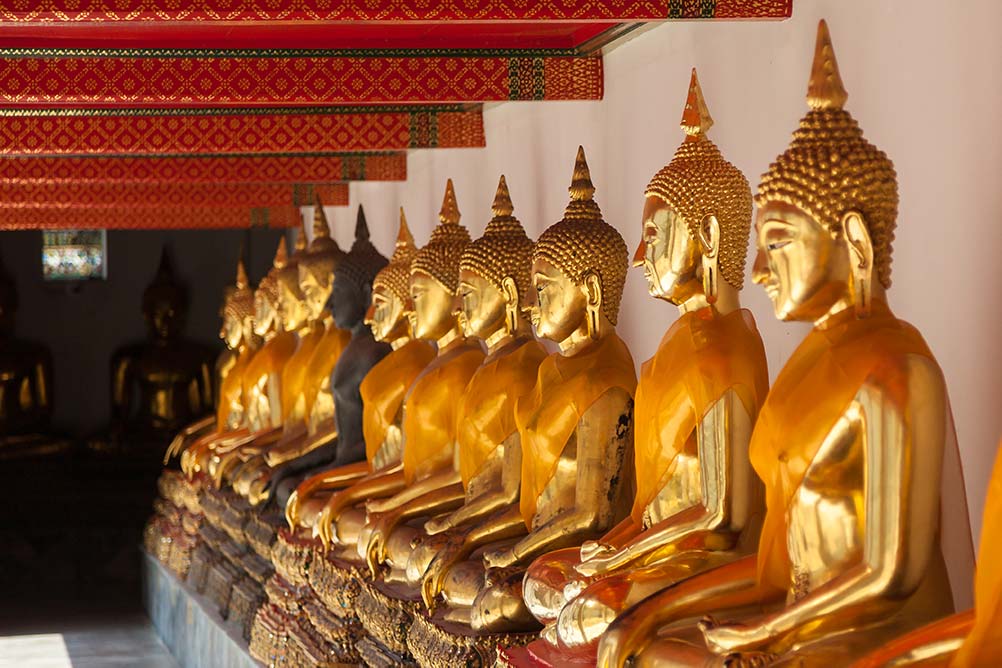
When one thinks of Wat Pho, the immediate images that come to mind are often its colossal Reclining Buddha or its status as a center for traditional Thai medicine. However, the temple’s history is equally fascinating and provides a rich context for its current prominence. Nestled in the heart of Bangkok, Thailand, Wat Pho has undergone significant transformations over the centuries, evolving from its original incarnation as Wat Phodharam to the multifaceted cultural landmark it is today.
Wat Phodharam: The Original Temple.
Before it was known as Wat Pho, this ancient temple was originally called Wat Phodharam. Built during the late Ayutthaya period in the 16th century, Wat Phodharam was a relatively modest monastery compared to the grandeur that Wat Pho would later achieve. However, even in its earliest days, the temple was a significant spiritual center for the local community.
The Transformation Under King Rama I.
The temple underwent a monumental transformation when King Rama I ascended to the throne in the late 18th century. Recognizing the historical and spiritual importance of Wat Phodharam, King Rama I ordered extensive renovations and expansions, breathing new life into the aging temple. It was during this period that the temple was renamed Wat Pho, marking a new chapter in its storied history.
King Rama I: The Visionary Behind Wat Pho’s Transformation.
The history of Wat Pho is deeply intertwined with the reign of King Rama I, the founder of Thailand’s Chakri dynasty. Situated in the heart of Bangkok, Wat Pho owes much of its current grandeur and significance to the extensive restoration efforts initiated by King Rama I. His vision not only revived the temple but also laid the foundation for its future as a cultural and spiritual landmark.
The Context: A New Capital and a New Beginning.
When King Rama I established Bangkok as the new capital of Thailand in 1782, he recognized the need for significant cultural landmarks to symbolize the spiritual and historical continuity of the Thai people. Wat Pho was chosen for a grand restoration, partly due to its proximity to the Grand Palace and partly because of its existing status as a significant temple, then known as Wat Phodharam.
The Restoration: A Monumental Undertaking.
The restoration of Wat Pho was no small feat. It involved extensive architectural work, including the renovation of existing structures and the construction of new ones. King Rama I envisioned Wat Pho as not just a place of worship but also as a repository of Thai culture and Buddhist teachings. To this end, he ordered the relocation of numerous Buddha statues from abandoned temples in Ayutthaya and other parts of the country to Wat Pho. This act not only preserved these valuable artifacts but also contributed to Wat Pho’s status as the temple with the largest collection of Buddha images in Thailand.
The Rebirth of Wat Pho.
The restoration was so comprehensive that the temple was practically reborn, leading to its renaming as Wat Pho, short for its full ceremonial name, Wat Phra Chetuphon Wimon Mangkhalaram Rajwaramahawihan. The temple grounds were expanded, new chedis and viharas were constructed, and a systematic layout was designed to accommodate various functions of the temple, including its role as a center for traditional Thai medicine and education.
Wat Pho as an Educational Hub.
King Rama III contributions to Wat Pho were not limited to architectural expansions; he also transformed the temple into Bangkok’s first public university. He commissioned the creation of more than 1,000 depictions of Buddha and added thousands of stone inscriptions that serve as educational materials. These inscriptions cover a range of subjects, from history and medicine to literature, effectively making Wat Pho a repository of Thai traditional knowledge.
Preserving Cultural Heritage.
Under King Rama III, Wat Pho also became a center for the preservation of traditional Thai medicine, including the famous Thai massage. The temple grounds were adorned with statues demonstrating various massage and yoga positions, serving both as art installations and instructional tools for students of traditional Thai medicine.
The Lasting Impact of King Rama III
The expansions and contributions of King Rama III have left an indelible mark on Wat Pho and, by extension, on the cultural heritage of Thailand. His vision transformed Wat Pho from a significant temple into a comprehensive cultural complex that serves multiple functions: as a place of worship, an educational center, and a repository of traditional Thai art and medicine.
The Reclining Buddha: A Testament to Artistic and Spiritual Grandeur
When it comes to iconic landmarks in Bangkok, Thailand, the Reclining Buddha at Wat Pho stands in a league of its own. This awe-inspiring statue is not just a spiritual emblem but also a marvel of art and craftsmanship. Its dimensions and intricate details make it one of the most visited and photographed attractions in Bangkok.
The Colossal Dimensions:
The sheer size of the Reclining Buddha is enough to leave visitors spellbound. Measuring an astonishing 46 meters in length and 15 meters in height, this statue is the largest Reclining Buddha in Bangkok. The enormity of its dimensions adds to its spiritual significance, symbolizing the infinite virtues and grandeur of the Buddha.
Craftsmanship: A Blend of Materials and Techniques:
The Reclining Buddha is crafted from a combination of materials that include brick, stucco, and gold leaf. The statue’s core is made of brick and plaster, which is then meticulously covered in gold leaf to give it a resplendent appearance. This blend of materials not only contributes to the statue’s durability but also enhances its aesthetic appeal.
Intricate Details: Beyond the Gold Leaf:
The craftsmanship of the Reclining Buddha extends beyond its primary construction. The statue’s feet are inlaid with mother-of-pearl, depicting the 108 auspicious characteristics of the Buddha. Each toe, each curve, and each feature has been carefully designed to capture the essence of Buddhist teachings and Thai artistry. The eyes and the soles of the feet are intricately designed, capturing the minute details that bring the statue to life.
The Artistic Techniques Involved:
The construction of the Reclining Buddha involved a range of artistic techniques, from sculpture and metalwork to inlaying and gilding. The meticulous attention to detail is evident in every aspect of the statue, from its serene facial expression to the intricate patterns that adorn its robe. The craftsmanship is a testament to the skills of Thai artisans, who have managed to create a work of art that is both visually stunning and spiritually uplifting.
The Reclining Buddha: A Synthesis of Art and Spirituality.
The dimensions and craftsmanship of the Reclining Buddha at Wat Pho make it a unique attraction that encapsulates the essence of Thai culture and Buddhist spirituality. Its colossal size and intricate details serve as a reminder of the artistic and spiritual heritage that Wat Pho represents, making it a must-visit landmark for anyone interested in exploring the depths of Thai culture and Buddhist teachings.
The Extensive Collection of Buddha Images: A Spiritual and Artistic Treasure Trove.
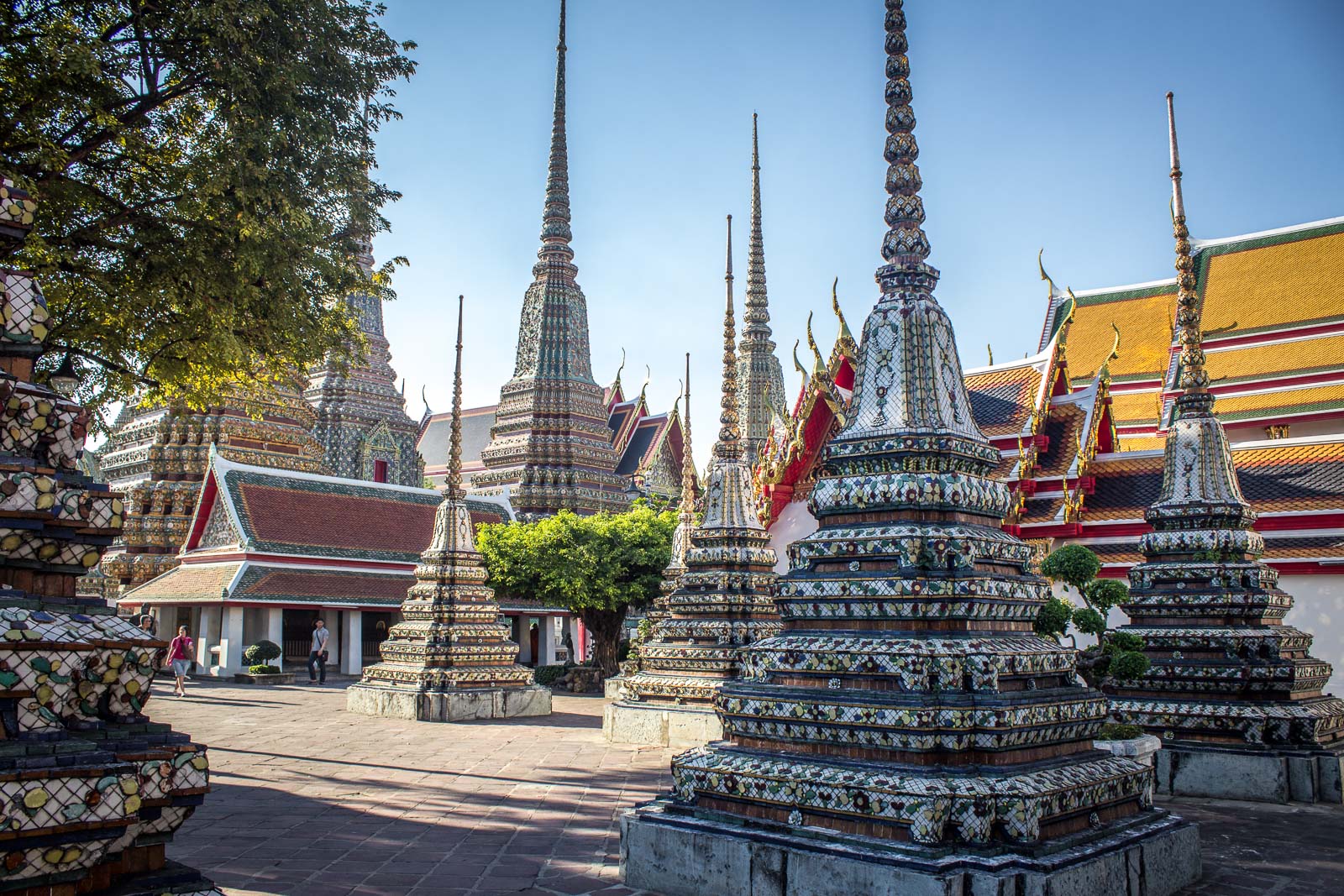
Wat Pho in Bangkok, Thailand, is renowned for more than just its colossal Reclining Buddha. The temple complex also houses an extensive collection of Buddha images, making it a significant spiritual and cultural landmark. This collection is not only impressive in its size but also in its variety, offering a comprehensive look into the rich tapestry of Thai Buddhist art and spirituality.
A Staggering Number: Over a Thousand Buddha Images:
One of the most striking features of Wat Pho is the sheer number of Buddha images it contains. The temple is home to over 1,000 Buddha statues, making it the largest collection of its kind in Thailand. This extensive array serves multiple purposes, from spiritual veneration to educational insight into Buddhist history and iconography.
A Diverse Array: From Seated to Standing, Small to Large:
The Buddha images at Wat Pho are not monolithic; they come in various forms, sizes, and postures. Visitors will encounter seated Buddhas in meditative poses, standing Buddhas in various mudras (symbolic hand gestures), and even smaller Buddha images intricately designed to fit into the temple’s numerous chedis (stupas). This diversity provides a comprehensive overview of Buddhist art, each statue serving as a unique representation of an aspect of the Buddha or a particular Buddhist teaching.
Materials and Craftsmanship: A Range of Artistic Expression:
The variety extends to the materials used in crafting these Buddha images. From bronze and stone to wood and gold leaf, the range of materials reflects the rich artistic traditions of Thailand. The craftsmanship involved is equally diverse, incorporating techniques like casting, carving, and gilding to create statues that are both aesthetically pleasing and spiritually significant.
Regional Influences: A Pan-Thai Collection:
What makes the collection at Wat Pho particularly unique is its representation of different regional styles within Thailand. From the Sukhothai and Ayutthaya styles to more contemporary interpretations, the Buddha images offer a pan-Thai overview of religious art. This makes Wat Pho not just a Bangkok landmark but a Thai cultural heritage site, encapsulating the diversity and unity of artistic expressions across the country.
Conclusion: A Spiritual Encyclopedia in Stone and Metal:
The extensive collection of Buddha images at Wat Pho serves as a spiritual and cultural encyclopedia, offering insights into the religious, artistic, and historical facets of Thailand. The staggering number and variety of Buddha statues make it a must-visit destination for anyone interested in Buddhism, Thai culture, or art history.
Traditional Thai Medicine and Massage at Wat Pho: A Center of Healing and Learning.
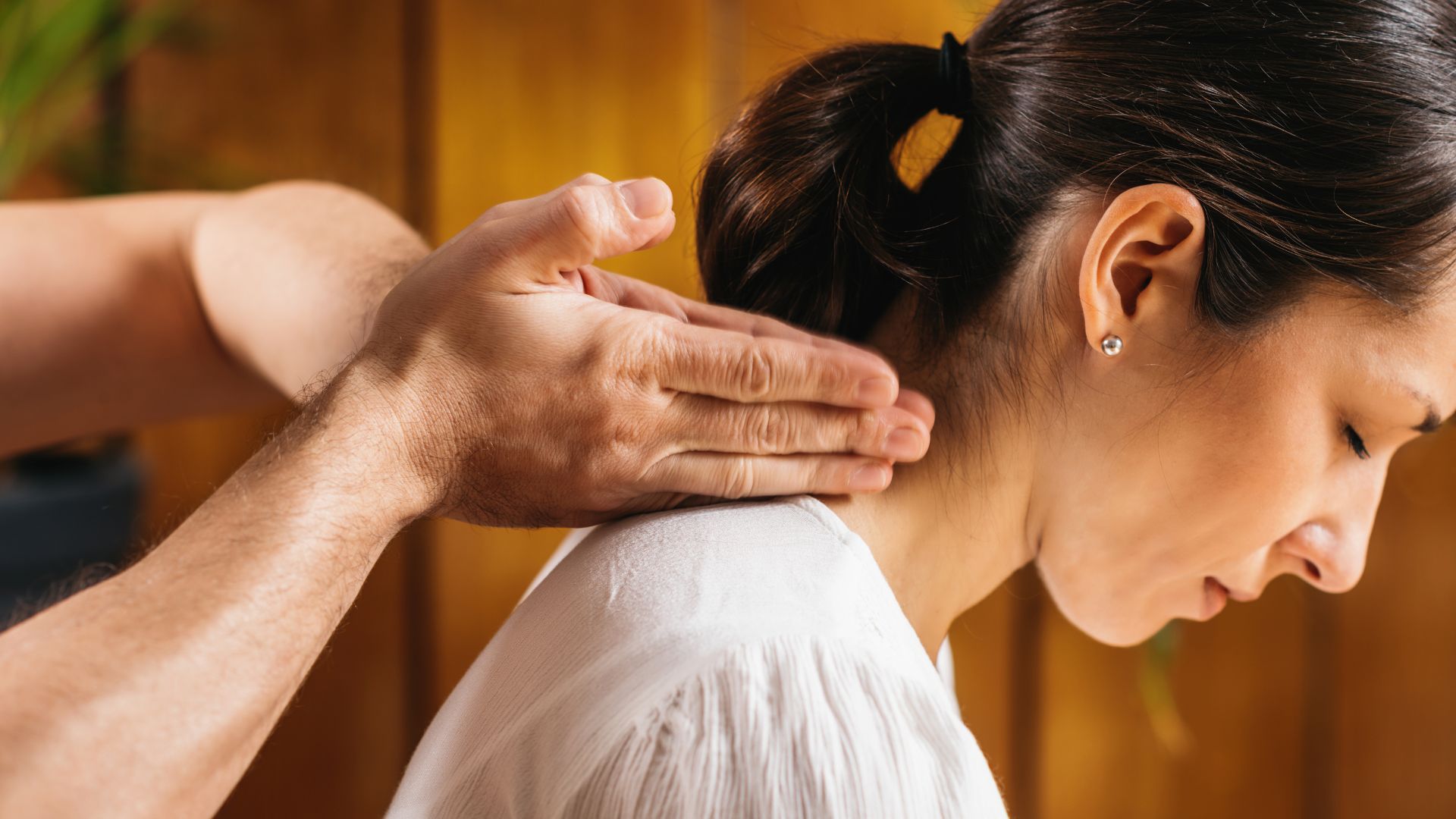
Wat Pho is not just a spiritual and cultural landmark in Bangkok, Thailand; it’s also a pivotal center for traditional Thai medicine and massage. The temple serves multiple roles in this regard, acting as a national headquarters for the practice, hosting a renowned massage school, and offering a variety of courses and treatments that attract both locals and tourists alike.
The Temple as a National Headquarters:
Wat Pho holds the distinction of being recognized as the national headquarters for the teaching and preservation of traditional Thai medicine and massage. This is not a recent development; the temple has long been a repository of medical texts and a training center for traditional Thai medicine. Its walls are adorned with inscriptions and illustrations that serve as educational materials, making Wat Pho a living museum and educational center for this ancient practice.
The Famous Massage School: A Legacy of Healing:
One of the most notable aspects of Wat Pho is its famous massage school. Established decades ago, the Wat Pho Thai Traditional Medical and Massage School has gained international acclaim for its rigorous curriculum and high standards of teaching. The school offers a range of courses, from basic introductory classes to advanced therapeutic techniques, attracting students from around the world who come to learn the art of Thai massage from the masters.
Courses and Treatments Available: A Holistic Approach:
The offerings at Wat Pho go beyond mere academic courses; the temple also provides a variety of treatments that visitors can experience firsthand. These treatments are not just limited to massage but also include other forms of traditional Thai medicine, such as herbal treatments and energy balancing techniques. Whether you’re a novice looking to experience a traditional Thai massage or a practitioner seeking advanced training, Wat Pho offers a comprehensive range of options.
Courses typically range from a few days to several weeks and cover topics like basic Thai massage, advanced medical Thai massage, and even specialized courses focusing on areas like the head, joints, or prenatal care. The treatments are conducted by skilled practitioners, many of whom are graduates of the temple’s own massage school, ensuring a high standard of quality and expertise.
Conclusion: Wat Pho as a Beacon of Traditional Thai Healing:
Wat Pho stands as a beacon of traditional Thai healing practices, offering a unique blend of spiritual nourishment and physical well-being. Its role as a national headquarters for traditional Thai medicine, its renowned massage school, and the variety of courses and treatments available make it a must-visit for anyone interested in the rich tradition of Thai healing arts.
Practical Information for Visitors: Navigating Your Visit to Wat Pho.
A visit to Wat Pho in Bangkok, Thailand, is a journey into the heart of Thai culture and spirituality. To make the most of your experience, it’s essential to be aware of some practical aspects, such as visiting hours, admission fees, dress code, and available amenities. Here’s a comprehensive guide to help you plan your visit.
Visiting Hours and Admission Fees:
Wat Pho is generally open to visitors from 8:00 AM to 6:30 PM daily, although the ticket counter usually closes around 5:00 PM. It’s advisable to arrive early to avoid the crowds and have ample time to explore the temple complex. The admission fee for foreign visitors is typically around 200 Thai Baht, which includes entry to the temple grounds and the Reclining Buddha hall. Some areas within the complex may require an additional fee, so it’s a good idea to check the latest information before your visit.
Dress Code and Etiquette:
Respect for local customs and traditions is paramount when visiting Wat Pho. A strict dress code is enforced to maintain the sanctity of this religious site. Visitors are required to wear clothing that covers the shoulders and knees. Sleeveless tops, short skirts, and flip-flops are generally not permitted. If you arrive in inappropriate attire, you may be able to rent or purchase suitable clothing at the entrance.
As for etiquette, it’s important to remember that Wat Pho is a place of worship. Speaking in hushed tones, refraining from public displays of affection, and not pointing your feet at Buddha images are some of the basic etiquettes to observe. Photography is usually allowed, but it’s polite to ask for permission when taking photos inside the more sacred areas.
Complimentary Amenities:
Wat Pho offers several amenities to enhance the visitor experience. Clean and well-maintained restrooms are available throughout the temple complex. Drinking water fountains and vending machines are also conveniently located. For those interested in learning more about the temple and its history, complimentary guidebooks and maps are often available at the information desk. Some areas of the temple also provide free Wi-Fi, allowing you to stay connected during your visit.
Conclusion: A Well-Planned Visit for a Rewarding Experience.
A visit to Wat Pho is a rewarding experience, but it’s one that requires a bit of planning and awareness of local customs. By knowing the visiting hours, understanding the dress code and etiquette, and taking advantage of the complimentary amenities, you can ensure a fulfilling and respectful visit to one of Thailand’s most revered cultural landmarks.
Tips for a Fulfilling Visit: Making the Most of Your Time at Wat Pho.
A visit to Wat Pho in Bangkok, Thailand, can be a transformative experience, offering insights into Thai culture, spirituality, and traditional medicine. To ensure that you make the most of your time, here are some tips on the best time to visit, areas you shouldn’t miss, and how to fully immerse yourself in the Wat Pho experience.
Best Time to Visit:
While Wat Pho is open year-round, the best time to visit is during Thailand’s cool season, which runs from November to February. The weather is more pleasant, making it easier to explore the expansive temple grounds. If you’re visiting during other times of the year, aim to arrive early in the morning or late in the afternoon to avoid the heat and the crowds. Weekdays are generally less crowded than weekends.
Areas Not to Miss:
Wat Pho is a large complex with much to see, but there are some areas that you absolutely should not miss:
- The Reclining Buddha: This iconic statue is a must-see, not just for its size but also for its intricate details, including the mother-of-pearl inlays on the soles of its feet.
- Phra Ubosot: This is the main chapel and one of the most sacred areas in the temple. It houses the principal Buddha image and is a stunning example of Thai architectural brilliance.
- The Massage School: Even if you’re not taking a course, it’s worth visiting this area to understand the significance of traditional Thai medicine and perhaps even enjoy a quick massage.
- The Courtyards: Filled with chedis (stupas) and smaller shrines, these areas offer a quieter space for contemplation and are less crowded than the main attractions.
How to Fully Experience Wat Pho:
- Take a Guided Tour: While it’s possible to explore Wat Pho on your own, a guided tour can provide deeper insights into the history and significance of the various structures and Buddha images.
- Participate in a Ceremony: If your visit coincides with a Buddhist ceremony or festival, don’t miss the opportunity to participate. It’s a unique way to engage with Thai culture and spirituality.
- Try a Traditional Thai Massage: To fully immerse yourself in the healing practices for which Wat Pho is famous, book a massage at the temple’s massage school. It’s a unique experience that combines physical rejuvenation with spiritual relaxation.
- Take Time to Reflect: Wat Pho is not just a tourist attraction; it’s a place of worship and learning. Take some time to sit quietly in one of the less crowded areas, absorbing the peaceful atmosphere and contemplating the spiritual teachings around you.
Conclusion: A Thoughtful Approach for a Rewarding Visit:
Wat Pho offers a rich and multifaceted experience that goes beyond mere sightseeing. By choosing the best time to visit, focusing on key areas, and engaging with the temple’s cultural and spiritual practices, you can have a fulfilling and enriching visit to one of Thailand’s most iconic landmarks.
Dining and Accommodation Options Nearby: Enhancing Your Wat Pho Experience.
A visit to Wat Pho in Bangkok, Thailand, is a feast for the senses, and that experience can be further enriched by exploring the dining and accommodation options in the vicinity. Whether you’re looking for a culinary adventure, a luxurious stay, or budget-friendly options, the area around Wat Pho has something to offer for every traveler.
Recommended Restaurants:
The Deck by Arun Residence [Map]: Located along the Chao Phraya River, this restaurant offers stunning views of Wat Pho and the nearby Wat Arun. The menu features a mix of Thai and international cuisine, making it a perfect spot for a romantic dinner.
Siam Origins [Map]: Located in the right-hand corner of the beautiful, historic building that houses the Siam Museum, Siam Origins Restaurant has become a new dining destination in the old town area of Bangkok. The restaurant offers more than just familiar Thai dishes that everyone knows. It also highlights ‘probiotics,’ hidden within the fermentation and pickling processes derived from local Thai wisdom, and brings them to the dining table.
Luxury Accommodations:
The Siam Hotel: This luxury hotel offers a blend of modern amenities and traditional Thai architecture. Located a short boat ride away from Wat Pho, it provides a serene escape from the hustle and bustle of Bangkok.
Chakrabongse Villas: For those looking for a more intimate experience, this boutique hotel offers luxurious suites with stunning views of the river and temples. It’s an ideal choice for travelers seeking both comfort and cultural immersion.
Riva Arun Bangkok: This upscale hotel offers panoramic views of both Wat Pho and Wat Arun. With its modern amenities and strategic location, it’s a popular choice for travelers who want to explore the cultural landmarks of Bangkok in style.
Budget-Friendly Choices:
Baan Wanglang Riverside: This budget-friendly hotel offers basic but clean rooms with the added bonus of a rooftop bar that provides spectacular views of the river and temples.
Arom d Hostel: Located within walking distance of Wat Pho, this hostel offers dormitory-style rooms and a cozy café. It’s a great option for backpackers and solo travelers.
Feung Nakorn Balcony Rooms and Café: This guesthouse offers affordable rooms in a charming setting. It’s located in a quiet area but is still within easy reach of Wat Pho and other major attractions.
Conclusion: A Well-Rounded Experience Near Wat Pho.
Your visit to Wat Pho doesn’t have to end when you leave the temple grounds. The surrounding area offers a range of dining and accommodation options that can make your trip to this iconic landmark even more memorable.
Whether you’re indulging in gourmet cuisine, enjoying a luxurious stay, or making the most of a budget-friendly choice, you’ll find that the area around Wat Pho enhances the overall experience of your visit to this cultural and spiritual hub.

